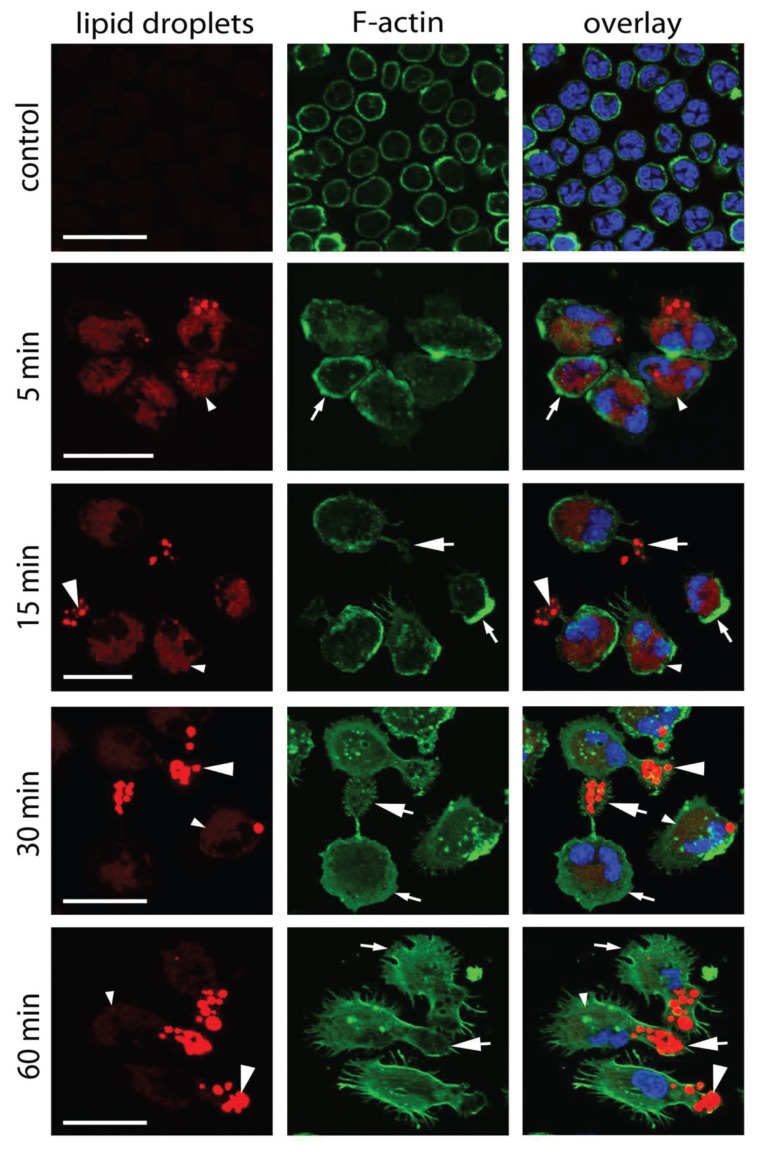Figure 5.
AAT-induced neutrophil polarization and reorganization of F-actin cytoskeleton. Controls and AAT-stimulated cells were labeled with Alexa Fluor 488-phalloidin for F-actin (green) and DAPI for DNA (blue). Intrinsic lipid fluorescence (red) was recorded as described in Materials and Methods. Spherical nontreated neutrophils with a subcortical F-actin arrangement showed no lipid fluorescence. After 5 min of exposure to AAT, cells spread out, acquiring wide F-actin–positive lamellas (small arrows) and accumulated lipid droplets in the cell body (small arrowheads). Gradually stimulated neutrophils obtained polarized elongated shape with uropods (large arrows) and F-actin redistribution from leading edges to F-actin foci in the central part of the cell. At the same time, larger lipid bodies (large arrowheads) accumulated at the rear of the cell. Representative images of three independent experiments are shown. Scale bar = 20 μm.

